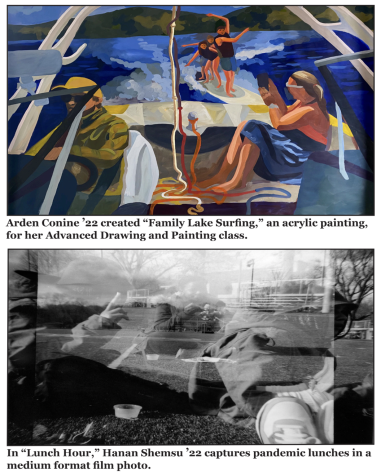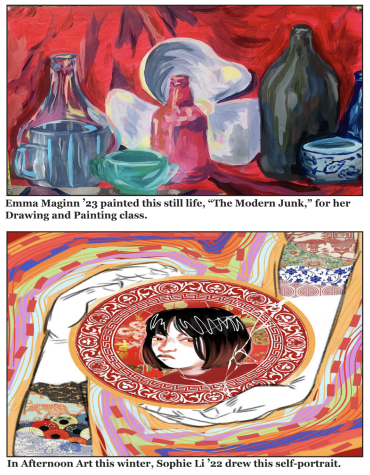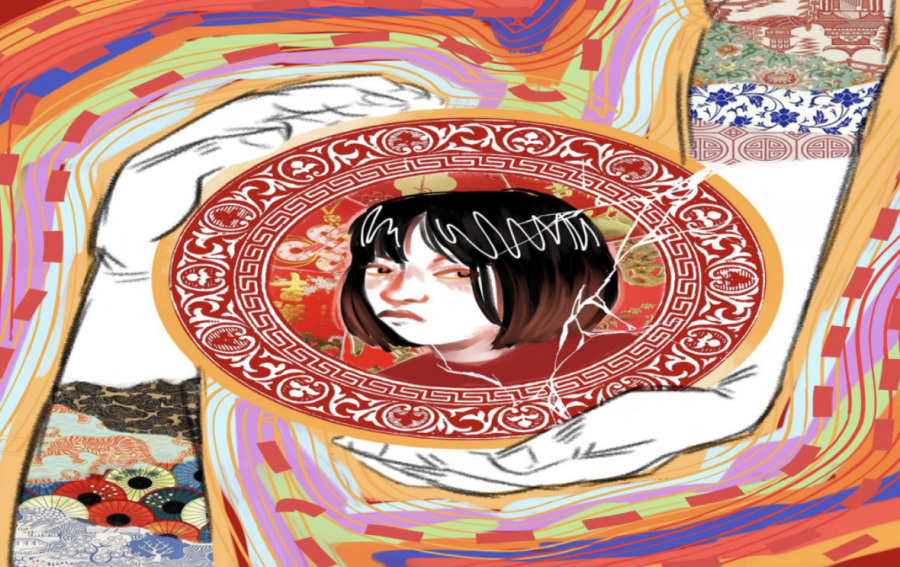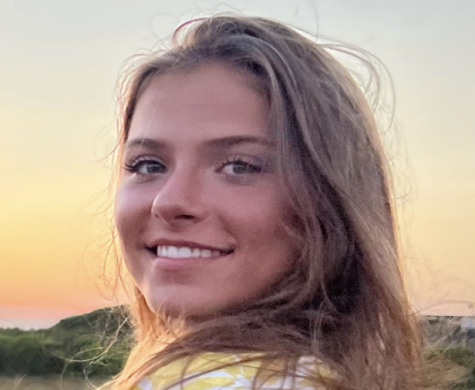Studio arts classes feel different this year — Creating art doesn’t
Adaptations offer new possibilities for teaching, producing, and exhibiting art
May 4, 2021
Scroll through the school’s virtual art gallery on Padlet.org, and your eye will flit from column to column, seeing dozens of winter studio art pieces in just a few minutes. The uniform digital stands display art of all shapes and sizes that would have hung from walls and sat atop display boxes in the gallery with a variety of color, composition, and form filling the physical space.
When the studio arts lost access to a gallery this year, Upper School (US) Art Teacher Lanie Wurzel adapted by creating a virtual platform to showcase student art on Padlet, a collaborative interface where participants can upload pictures, view others’ art, and comment.
“Although I will say I miss having a physical gallery, the Padlet has allowed for something different to happen,” Ms. Wurzel said. “I can send it out in an email blast and reach a much wider audience. It’s been sent to alumni relations and all these people who would never get to come see the show in school. Moving forward, I think it will be something I continue to use.”
She said a 2D presentation has its drawbacks, however.
“The con is seeing something on a little screen as a little picture,” she said. “It’s just not the same as seeing artwork in person. The scale gets lost in translation.”
The studio arts curriculum has seen other evolutions under COVID restrictions as well. Drawing and painting students, for example, have all received individual materal kits containing paint, brushes, and oil pastels for creativity during remote days.
“I really like having the oil pastels and drawing tools at home because I have more time to make I want with them,” Drawing and Painting Student Emma Maginn ’23 said. “It was nice to have those—and extra time to work on [my art] and get it to look how I wanted.”
Art has offered a welcome place for reflection and sense of peace, Emma added.
“Now I really see how valuable art is,” she said. “Before, I never thought of it as an outlet. The fact that the school is making such an effort and taking so much time to plan out the arts courses is really meaningful.”
US Photography Teacher Andrew Warren said photography looks completely different this year for some classes, with modified content and structure. Without access to the school’s traditional analog darkroom, he said, his own classes have changed from top to bottom.
“I teach so much with analog [materials] in terms of using film, film cameras, processing film, and making prints, so once that went out the window, it was a matter of starting from scratch with a lot of the content,” he said.
Advanced Photography Student Olivia Bancel ’22 said class in the fall, out of the studio with Mr. Warren remote, still felt meaningful.
“We made it work at the beginning of the year. He showed us documentaries about famous photographers and their style, which was inspiring.”
Still, when Mr. Warren returned after winter break and materials became more accessible, Olivia said, she appreciated getting back in the photo lab.
“I love using the lab so much because I don’t have one at home or anywhere near me, so it’s the only place I can access one,” she said. “I take a different camera home every weekend to learn more about each individual camera and how they all shoot photos differently, and I love comparing my photos to each other after I use each camera.”
US Ceramics Teacher Christian Tonsgard, remote until this January, said restoring some aspects of his classess has been difficult.
“With COVID, I have just started the pottery wheel this April. I’m easing into it as I become more comfortable with the restrictions,” he said. “The projects move at a limited pace due to the schedule, and it’s hard to send students home with clay and materials. So projects don’t progress as fast.”
On remote days, Mr. Tonsgard has had students explore and reflect on different artists as well as discuss art’s place in current events—a bigger underlying theme than in past years, he said.
“The beautiful thing about being an art teacher is you can walk into a classroom, you can read the room, and if it’s obvious we’re not going to get much done, you can pivot, talk about artists and what’s going on, and just give everybody a break to recharge,” Mr. Tonsgard said.
Ceramics Student Clara Noyes ’23 said student morale remained strong and even rose once the sophomores and juniors in her course could be together.
“The environment in our class was automatically changed when the juniors joined,” she said. “It was so nice to see other faces, and our class already had really great energy. It was really refreshing.”
The content of the class itself, she added, has been a much-needed respite this year.
“Everything around us has changed, but art has stayed the same. It’s a break from COVID, I think, for a lot of people. It’s just a great reminder of what we’re looking toward on the other side.”





